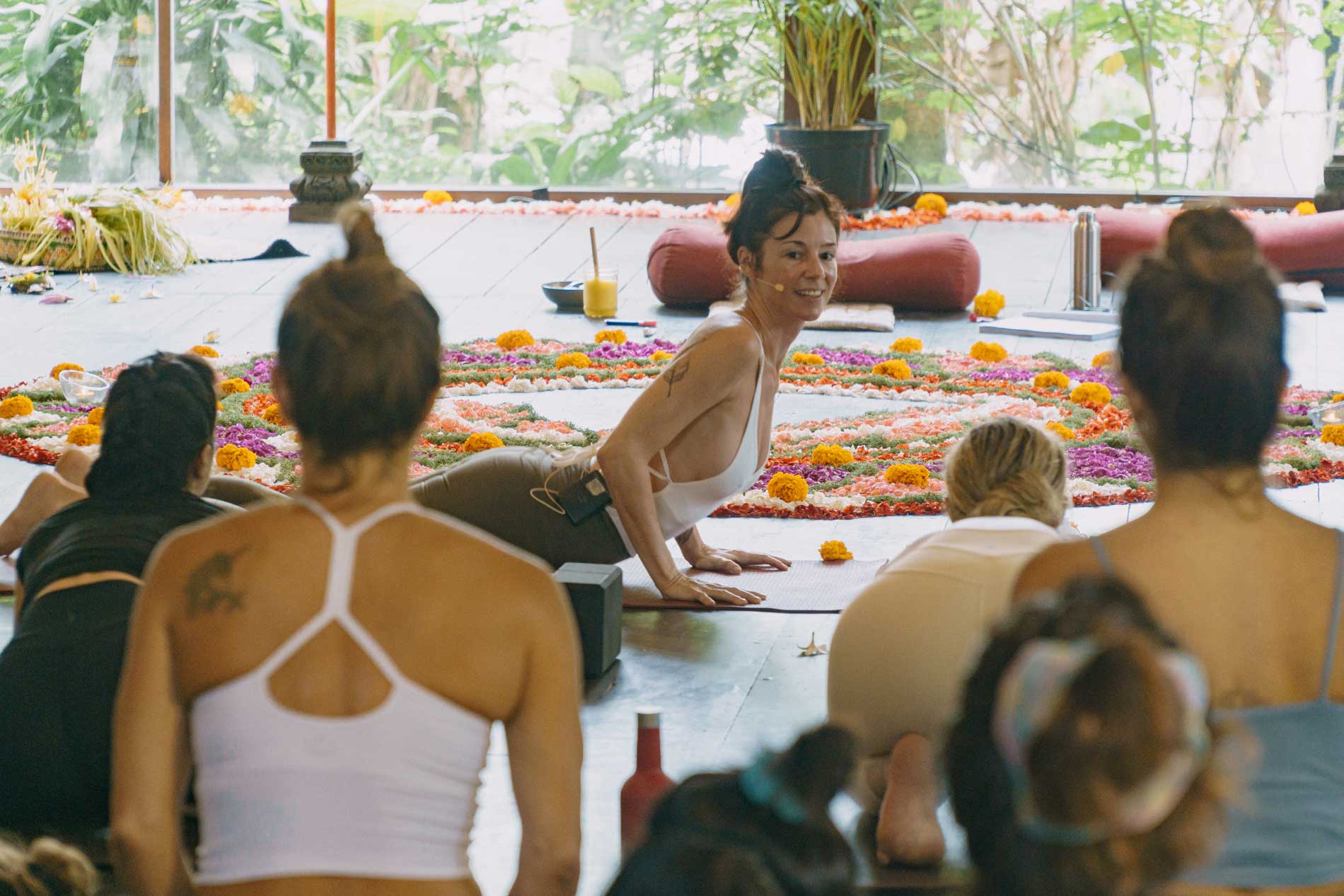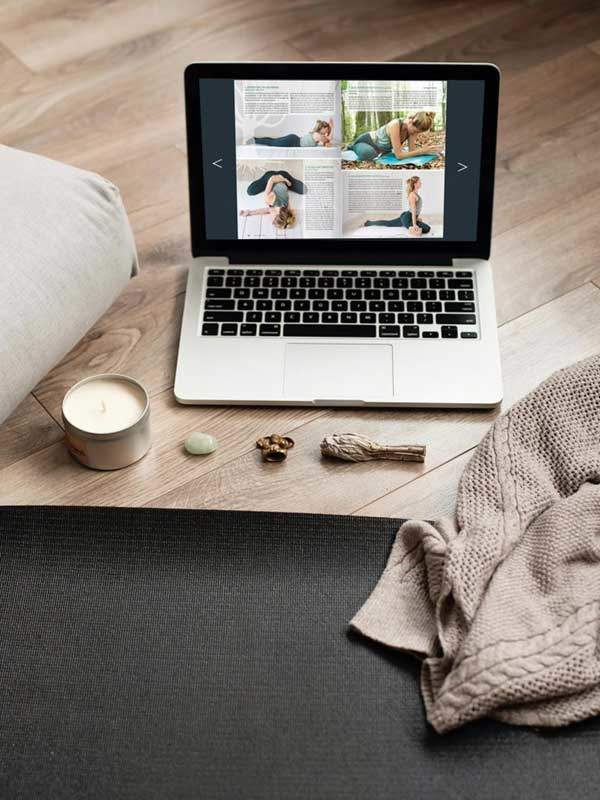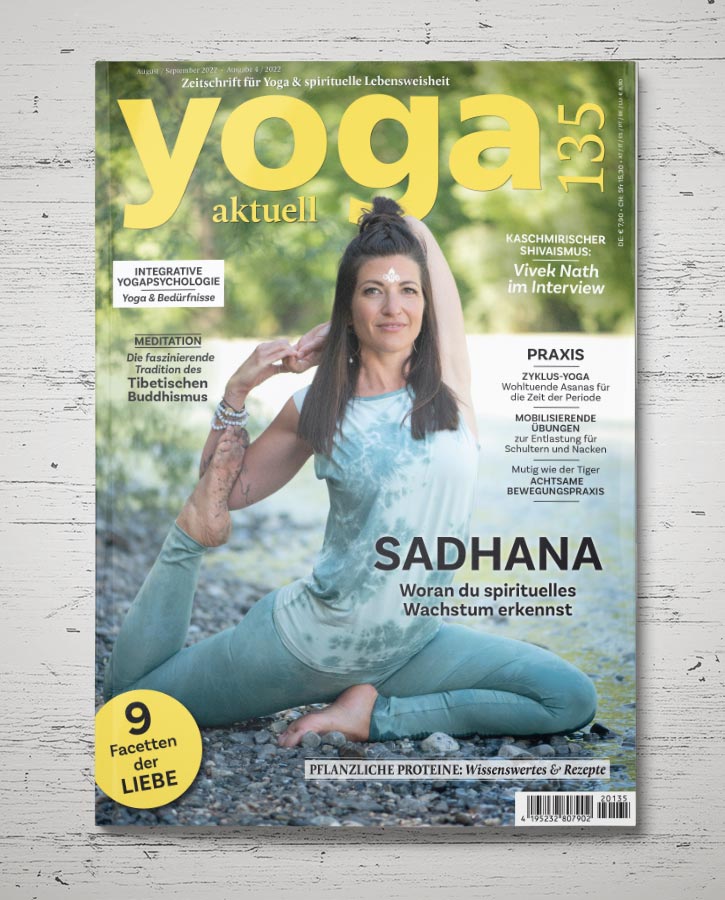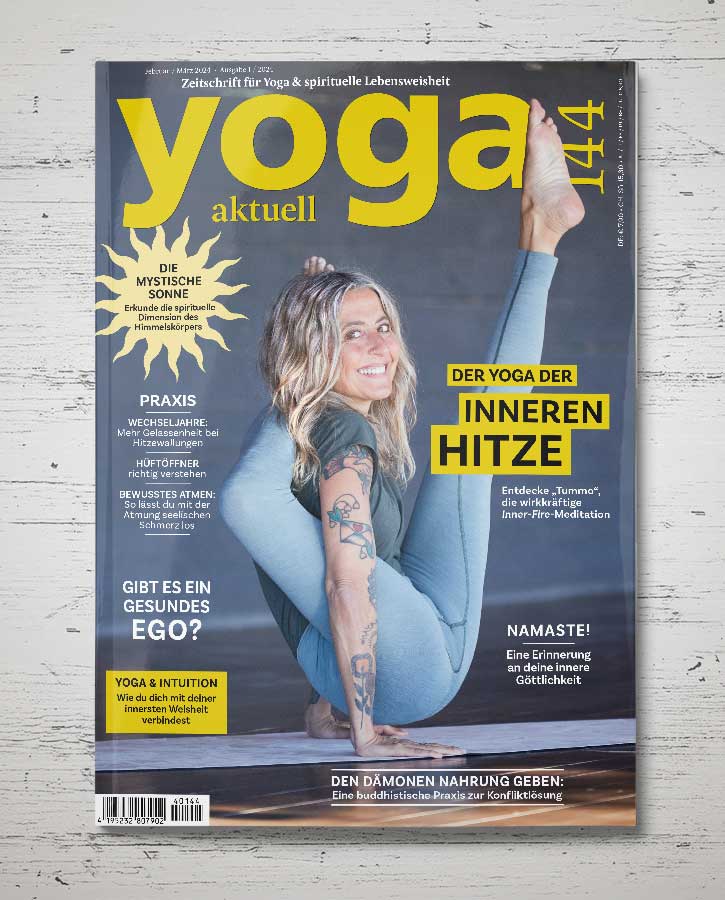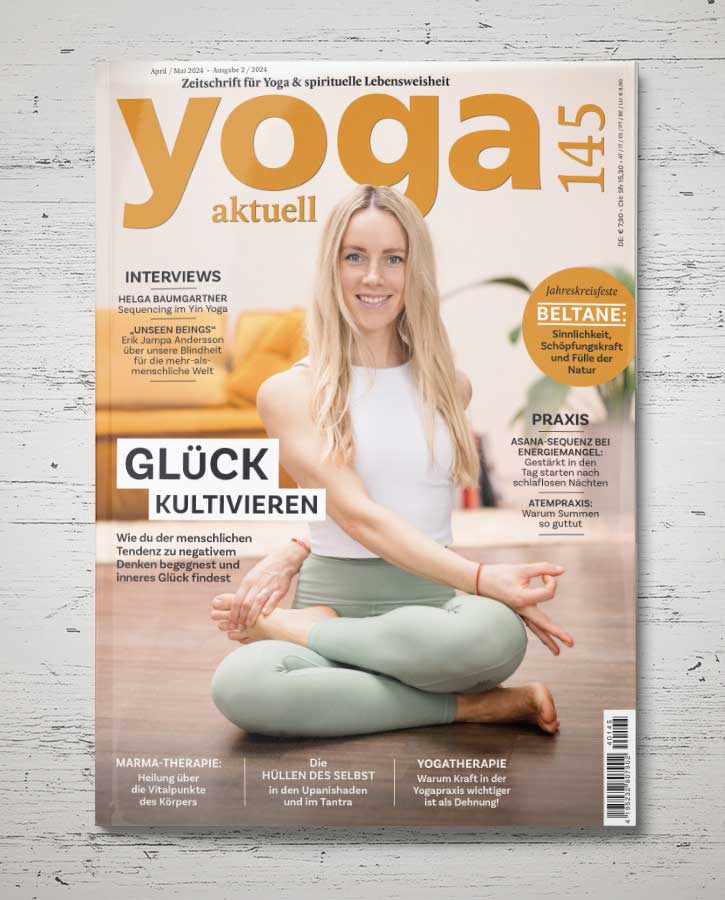What does it mean for you to uncover your intrinsic genius and where would you look to find it? How would you go about in uncovering it? And how can you express this intrinsic genius in your time on the mat as well as in creating a sequence as a yoga teacher?
Die deutsche Version gibt’s hier.
Flowing with and learning from Meghan Currie
The first 100-hour-part of Meghan Currie’s Advanced Yoga Teacher Training was dedicated to “Sequencing & Sadhana.” Honestly, Meghan’s playful, fluid and creative sequencing is what got me hooked right from the beginning after I flowed with her for the first time. With “Sequencing & Sadhana being the first part of her Advanced YTT I was curious about how she creates her fluid, playful pieces of art.
What I’ve learned is that your own sadhana is key as to how you sequence and teach. To gain more trust into your own sadhana and yourself (because let’s be real: who as a teacher doesn’t doubt their own knowledge and creativity every once in a while?!), it’s key to remember that there is an intrinsic genius in each and every one of us. And therefore, the teachings of Vedanta are literally nourishment for your soul: The teachings remind us that we are already whole just the way we are. **
** Vedanta is the end portion of the Vedas (i.e. the Upanishads) which teach the Brahma Vidya, the knowledge of the limitless being (which, according to the Upanishads, is THE SELF)
Vedanta says:You are the whole, you are full and complete as you are. – Shāradā Devī from www.devischool.info |
What does “intrinsic genius” mean?
As a yoga teacher we often are an amalgamation of our mentors and yoga teachers that influenced us most on our own yoga journey. Certain phrases and words as well as mini sequences are deeply engrained in us because our muses, role models and gurujis unconsciously instilled them in us; they molded us into the teachers we’ve become. However, having taken on so many aspects from others, it can feel difficult and challenging to peel back all those layers we’ve taken on to uncover our own intrinsic genius. For some of us teachers, this question arises: “What is truly mine? Can I create sequences and flows that stem from my own inner being? How can I tap into what is intrinsically mine?”
| INTRINSIC = belonging to the essential nature of a thing: Occurring as a natural part of something GENIUS = an exceptional natural capacity (Meghan Currie Manual, module 1, p. 3) |
What does this mean for us as yoga teachers?
You have it in you and if you consciously tap into it, you can harness it for your own practice and let it transform the way you are teaching and sharing yoga. And most importantly, remember you don’t have to become someone else to become a genius because who you are right now is already enough. You are whole and complete and there is no need to add anything or take anything away.
Your body is wise, you are unique and have innate gifts to share. Who you are, with all of your experiences that have brought you to this very moment, is more than enough.
– MEGHAN CURRIE
What does sadhana mean?
When we think of sadhana, we often limit it to our time on the mat. However, pouring coffee into our mug in the morning, smiling at strangers, consciously smelling the rain, kissing and hugging our loved ones, compassionately petting our furry friends – all of these things can be labeled sadhana. As soon as you invest presence and sprinkle some awareness into any action, it can be considered sadhana.
Everything can be sadhana. The way you eat, the way you sit, the way you stand, the way you breathe, the way you conduct your body, mind and your energies and emotions – this is sadhana. Sadhana does not mean any specific kind of activity, sadhana means you are using everything as a tool for your wellbeing.
– SADHGURU
Why is sadhana important for sequencing?
The way we live our lives and practice on our mats informs how we sequence and teach. All our individual experiences in life have left an imprint in us. What we extracted from these experiences and how we see ourselves informs who we are and how we tell our own story. The truth is that all of us have a unique story to tell. Everything we experience leaves an imprint in us: physically, mentally, emotionally.
The same applies for our sadhana and the time we spend on the mat: the more deeply we experience asanas or sequences in our bodies, minds, and the emotional world, the more they leave an imprint on us. Just thinking of certain poses, we know what they feel like on our bodies and we instantly know what muscles to engage, where to expand, lengthen, or soften. In so doing, they become embodied knowledge. Without being in the poses, we can feel their effects in our bodies because they’ve become second nature already.
Meghan finds that sadhana and sequencing create a positive feedback loop as they nourish and increase the potency of each other. And here’s why…
Embodied knowledge: the way you spend time on your mat matters
How do you spend your time on the mat when you’re not teaching yourself? Usually, I love to be led by someone to completely switch off my mind and be present with my breath and in my body. However, during the YTT Meghan encouraged us to explore with some free-flow practices on the mat to get a feel for what our bodies really wanted to do, move, stretch, release…
Honestly, I personally find it very difficult to surrender to this process, to being playful, to flowing organically, and to tapping into my intrinsic genius. Even though this is still a part I struggle with, I know that at the end of this messy process there will be a big reward waiting for me on the other side: I just have to be patient with myself, free myself from any immediate outcomes (which honestly is the hardest part!), and catch whatever impulses and movement patterns come up in this explorative process. Remember: resistance is part of the process! And this messy part is key. As Meghan puts it: “Accessing our creativity can feel vulnerable, messy and imperfect, but imperfection is the laboratory for fresh new discoveries.” So go have some fun exploring the rich unknown.
How to practice embodiment on the mat? – some tips to start your own free-flow practice:
|
Why is embodied knowledge important?
If we move from an intuitive, embodied experience, we’re merging body and mind, the conscious and the subconscious; the felt experience eventually becomes the embodied knowledge. We experience and feel asanas or sequences in our body so often that they become second nature, i.e. embodied knowledge. By embracing the embodiment, we can then share from a place of deep knowing.
This sounds sensible, but have you been teaching yoga this way thus far?
Organic vs. mechanic in sequencing and theming
What is your main style of sequencing? Do you just mentally go through your sequence and jot it down or do you organize your class organically from a felt experience?
Pursuing an embodied way of sequencing and theming, we ask our bodies questions to move accordingly and generate these sensations and felt experiences. There is so much magic in organic, embodied movements; we’re using the intelligence of our body. In order to be able to listen to our bodies, we need to slow down. This builds self-trust in ourselves and we regain trust in our bodies in the most natural way. In organically flowing with our bodies, we’re becoming more intimate with the language of our own body and start to surrender to its own intelligence. Gently peeling away layer by layer to finally access the more subconscious levels of our own intelligence, we discover the intrinsic genius within. When we’re led by organic, embodied movements, the feelings and sensations take precedence and the flow becomes more organic and less rigid.
“It’s not necessarily the meaning you think, it is the meaning you feel.”
– STEVE FOWKES
If you’ve been mainly relying on your intellect when it comes to sequencing, there are also benefits to that: this promotes safer sequences for the students, plus, having structure gives a feeling of being more organized. The major drawback would be that one might be too disconnected from the body so that you miss these little aha-moments and very rich sensations of the transitions when flowing from pose to pose.
Ultimately, we need both: the embodiment and the intellect to create an inspirational and authentic class.
3 TIPS TO LEVEL-UP YOUR TEACHING AND SEQUENCING:
1. Build an Experience Library:
Create two to three sequences and keep practicing them. The more often you flow through them, the more you embody your sequences and they eventually become second nature. Focus on alignment and activation points so that you can feel the movement in your body while cueing; you intrinsically know what’s needed to fully incorporate that sequence.
2. Taste the flavour of each pose:
3. Focus more on transitional cues instead of dropping asana names:
“Neither a lofty degree of intelligence nor imagination nor both together go to the making of a genius. Love, love, love, that’s the soul of a genius.”– WOLFGANG AMADEUS MOZART
| More about Meghan: |


